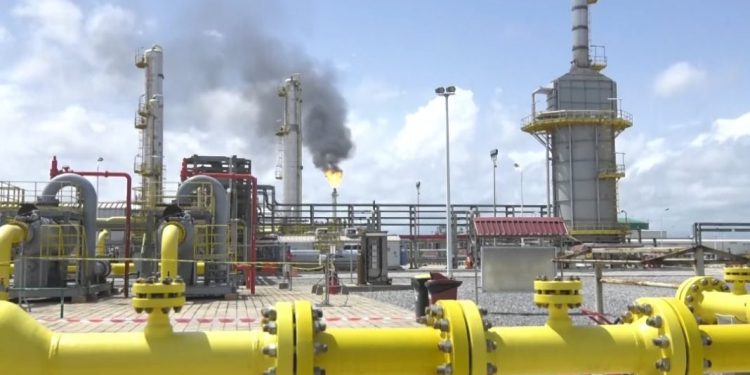Ghana’s natural gas infrastructure is facing increasing danger as illegal mining activities, popularly known as galamsey, continue to encroach on critical energy corridors, as authorities and energy sector experts have raised alarms over the growing risk of damage to gas pipelines, particularly in forest and rural regions where galamsey is rampant.
At least 50 communities along the natural gas pipeline routes in Ghana’s Western and Ashanti regions have been identified as high-risk zones, posing significant threats to the country’s strategic energy infrastructure. These areas, heavily affected by galamsey, are now under intense surveillance due to the dangers they present, according to Genser Energy.
The Vice President in charge of Operations at Genser Energy, Ing. Henry Abeiku Oppong, made this known during an interview with GBC in Kumasi on the sidelines of a seminar.
He said “We’ve more than 50 communities we’ve identified as galamsey-prone areas where the activities normally interrupt or cut our communication cables. And we’ve identified the communities where we’ve intensified surveillance and monitoring systems… There are a lot of areas in the Western region. Galamsey is very active in the Western region. Our pipelines, Western region to Ashanti region, these areas are where we’re battling assiduously to ensure the communities are well sensitised to understand that some of these activities are very harmful to the Operations of the pipelines and can become real threats to the communities.”
Despite Genser Energy’s efforts to monitor and protect the entire pipeline network using multiple strategies, Ing. Oppong emphasised that the scale of the threat demands immediate involvement from national security agencies to safeguard the infrastructure.
He further noted that Ghana could achieve self-sufficiency in natural gas supply within the next year. This would be made possible through the completion of gas processing plants by Genser Energy and Ghana Gas, with a combined daily capacity of 350 million standard cubic feet (scf), nearly enough to meet Ghana’s peak daily electricity demand of 460 million scarf.
“Genser is going to finish our Processing plant in the 3rd quarter of this year, October, November, the plant will be firing. GPP, with what I know, they’re also ready to build their Processing plan,t which I know will not exceed 12 months to give us enough capacity, in terms of processing and utilising the reserves that we’ve,” he disclosed.
Currently, Ghana supplements its local production capacity of 380 million scarves per day with supplies from the West Africa Gas Company.
In some cases, illegal miners have unknowingly dug into restricted pipeline zones, mistaking them for untapped gold-rich land. The risk is compounded by the fact that many of these pipelines are buried and not immediately visible.
Environmental and economic impact
Aside from the direct threat to infrastructure, the environmental damage from galamsey further increases the risk of landslides, soil instability, and water contamination — all of which threaten the safety of pipeline installations.
The economic repercussions are equally concerning. Any disruption in gas flow could cripple power generation and affect industries that rely on gas as a primary energy source, leading to potential job losses and setbacks in national development.











